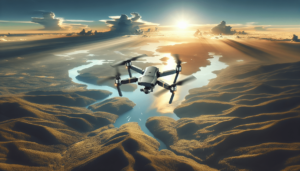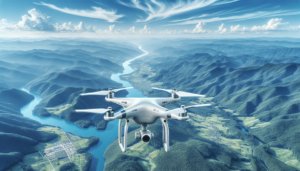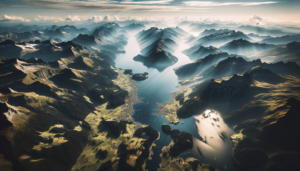Have you ever gazed out of an airplane window and thought about how magical it would be to capture that sweeping view? We’ve been there, pondering the mysteries that lie in the art of aerial photography. It’s one thing to take a breathtaking shot from the ground, but the exhilaration of capturing a stunning vista from way above opens a whole new world of photographic possibilities.
2025 is an exciting time to delve into this realm of photography, especially with technological advances making it more accessible than ever. But where do we start? Let’s navigate these skies together with some essential tips to make sure we have our heads in the clouds and our feet…well, not that firmly on the ground, metaphorically speaking.
Understanding Your Equipment
Before we even think about pressing that shutter button, it’s crucial to become good friends with our equipment. Like any solid friendship, this requires some time and patience.
Drones and Cameras: The Aerial Arsenal
First off, selecting the right drone or camera equipped for aerial photography is key. Not all drones are created equal, and neither are all cameras. What do we need? Stability in flight, high-quality imaging, and ease of use. We’re aiming to find that sweet spot where technology meets practicality.
| Feature | Ideal Specification |
|---|---|
| Camera Resolution | At least 12 MP |
| Flight Time | Around 20-30 minutes |
| Stabilization | 3-axis gimbal is preferable |
| Range | Minimum 1 mile |
Know Your Camera Settings
Now that we have our gear, let’s delve into the intricacies of our camera settings. It’s good to familiarize ourselves with shooting modes such as aperture priority, ISO settings, and shutter speed. Understanding these can be the difference between a mediocre shot and one that captures the magic of the moment.
Safety Comes First
As thrilling as it is to send our drones soaring into the sky, safety should always be our co-pilot.
Understanding Flight Regulations
Nothing halts creativity faster than a legal timeout. It is paramount that we sift through local and international flying regulations. This involves registering our drone if necessary and understanding the airspace classifications to avoid no-fly zones.
Pre-Flight Checklists
Our pre-flight checklist isn’t just admin—we’re ensuring our equipment and environment are ready. Check that battery levels are optimal, the propellers are secure, and that there aren’t any nearby gusts of wind that might cause turbulence.
![7 Essential Aerial Photography Tips For Beginners [2025] 7 Essential Aerial Photography Tips For Beginners [2025]](https://droneaperture.com/wp-content/uploads/2025/01/7-essential-aerial-photography-tips-for-beginners-2025-1024x585.png)
Composition and Framing Tips
Elevating our photography from up high isn’t just about the view. It’s about how we frame it; composition is storytelling through our lenses.
Rule of Thirds: A Timeless Trick
Even from above, the rule of thirds holds its ground. Imagining a grid over our scene, placing points of interest along these lines or at intersections can create a compelling, well-balanced shot.
Finding Unique Angles
The sky isn’t always the limit. Experiment with different heights, angles, and distances to find a unique perspective. Sometimes, tilting the camera slightly down can capture the full extent of a landscape’s beauty or highlight patterns only visible from above.
Playing with Light
Lighting can make or break our aerial photo. From golden hours to harsh midday sun, each moment presents a different challenge and opportunity.
Timing: The Golden Hour Advantage
There’s a reason photographers rave about the golden hour—the period shortly after sunrise or before sunset. The light is softer, the shadows longer, and the world seems dipped in warm honey.
Dealing with Midday Sun
If we’re shooting when the sun is at its zenith, it’s important to manage exposure. This could involve adjusting the ISO setting down and using filters to manage glare.
![7 Essential Aerial Photography Tips For Beginners [2025] 7 Essential Aerial Photography Tips For Beginners [2025]](https://droneaperture.com/wp-content/uploads/2025/01/7-essential-aerial-photography-tips-for-beginners-2025-1-1024x585.png)
Post-Processing Magic
Capturing the image is only half the story. The real wizardry sometimes lies in post-processing, enhancing what we’ve already captured without straying from authenticity.
Software Savvy
Familiarizing ourselves with editing software, whether it’s Adobe Lightroom or something else, allows us to tweak colors, contrast, and exposure to bring out the best of what we visualized from up high.
Keeping It Realistic
While it’s tempting to go all out editing, the goal should usually be enhancing rather than altering. We’re aiming to convey the natural marvel we witnessed, not create something entirely fictional.
Building a Portfolio
So, now we’ve got a repertoire of shots, what’s next? Sharing our work is an essential step in establishing our voice in the world of aerial photography.
Curating Our Best Work
Quality over quantity—choose shots that not only display technical prowess but also tell a story. Whether it’s a single sweeping panorama or a close-up of an architectural marvel from above, each image should speak a thousand words.
Getting Noticed
In today’s digital age, it’s crucial to have an online presence. From social media platforms to photography forums, sharing our work can help connect us to a broader audience who share our sky-high passion.
The Future of Aerial Photography
As technology advances, so too does the potential of aerial photography. It’s fun to speculate on what new doors will open up by 2025.
Innovations on the Horizon
We can imagine drones becoming even more intuitive, equipped with AI to assist in obstacle avoidance and automated shot composition. The shift toward more sustainable energy sources might lead to longer flight times and less environmental impact.
Our Role in Shaping the Future
By staying curious and constantly learning, we contribute to not only our personal growth but to the broader conversation of what aerial photography can achieve. Sharing insights and techniques with others, we can help this art form reach new heights—both literally and figuratively.
In conclusion, aerial photography offers us a unique way to see and share the world. Whether we’re just beginning this journey or refining our craft, these tips lay down a runway for our creativity to take flight. Let’s keep our gear ready, our eyes sharp, and our imaginations adrift on the winds of opportunity.


